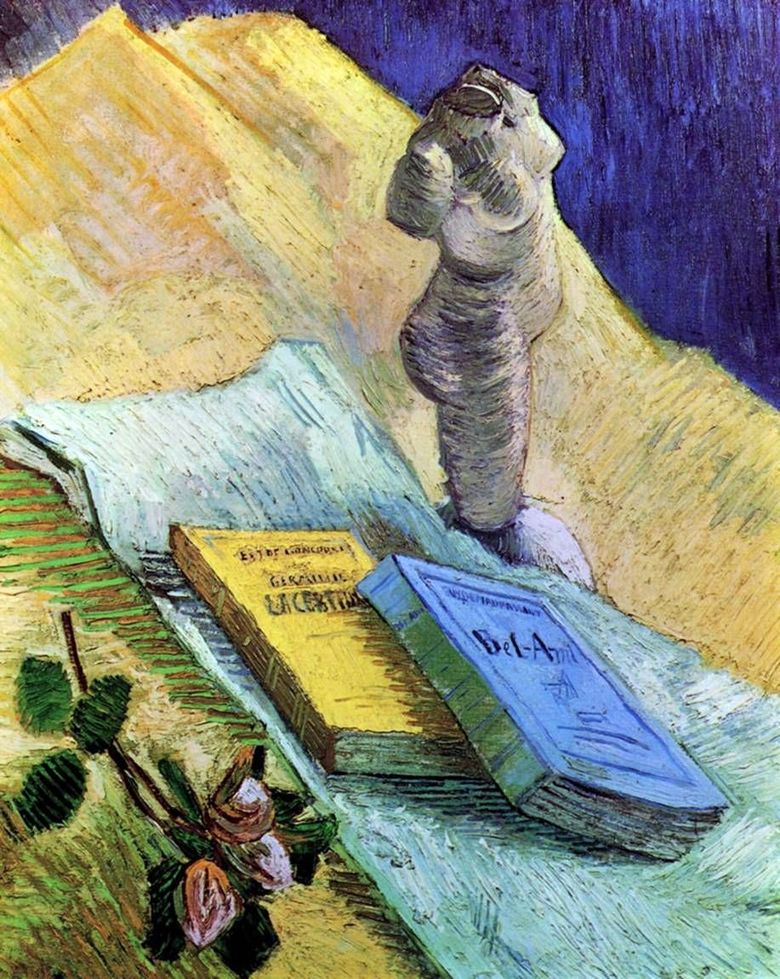
“Still-life with a statuette” Van Gogh created in 1887 in Paris. This is one of the best still lifes he wrote during this period. The painting is a kind of “still-life portrait”, the elements of which symbolize what Van Gogh lived at that time.
The gypsum statuette indicates the artist’s belonging to the Romanesque art, the books of Guy de Maupassant and the Goncourts – to his admiration for modern prose, and the carelessly thrown rose personifies the unique cultural climate and chic of Paris, which impressed the young artist.
The composition of the painting is fundamentally different from the early still lifes of Van Gogh. If the Dutch works are static and clearly aligned, then there is a significant predominance of dynamics. The items are arranged in a diagonal, moving from left to right and from top to bottom. Energetic brush strokes increase the sense of movement.
Coloring paintings based on a combination of contrasting colors, which are very harmoniously complement each other. The background is written in intense bright blue color, on which a yellow napkin is allocated. The color accent is made on two books, the covers of which are written in bright, contrasting colors. The composition, the color scheme and the nature of the imposition of smears testify to Van Gogh’s adherence to the ideas of impressionism.
 Still Life: French Novels by Vincent Van Gogh
Still Life: French Novels by Vincent Van Gogh Still life with lemons on a plate by Vincent Van Gogh
Still life with lemons on a plate by Vincent Van Gogh Still life with a decanter and lemons on a plate by Vincent Van Gogh
Still life with a decanter and lemons on a plate by Vincent Van Gogh Still life with pears by Vincent Van Gogh
Still life with pears by Vincent Van Gogh Still life: pink roses by Vincent Van Gogh
Still life: pink roses by Vincent Van Gogh Nature morte avec une figurine en plâtre, une rose et deux romances – Vincent Van Gogh
Nature morte avec une figurine en plâtre, une rose et deux romances – Vincent Van Gogh Still life: vase with oleanders and books by Vincent Van Gogh
Still life: vase with oleanders and books by Vincent Van Gogh Still life: vase with irises on a yellow background by Vincent Van Gogh
Still life: vase with irises on a yellow background by Vincent Van Gogh